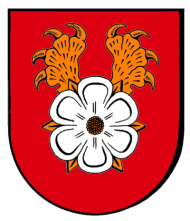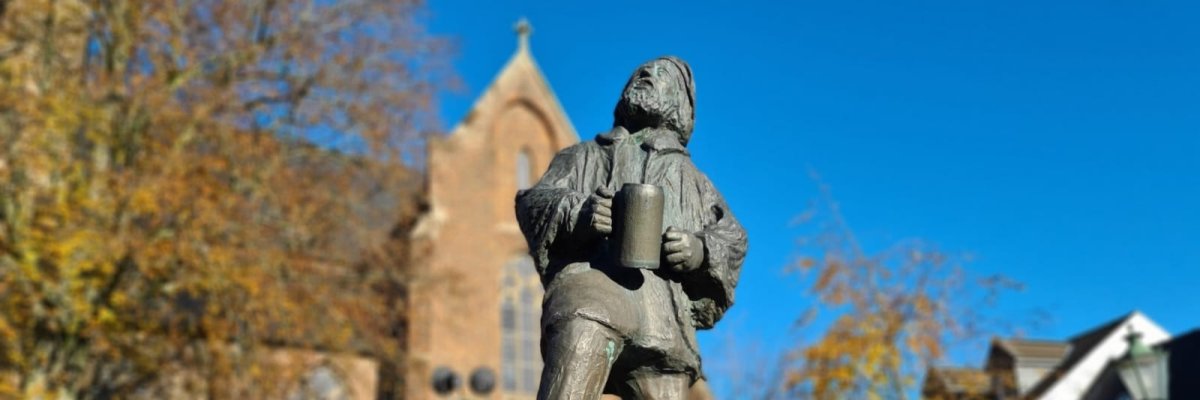Betting
The village of Wetten is home to 2,585 people (as of 31.12.2023) on 2,570 ha. This makes Wetten the largest district of Kevelaer in terms of area. The village character of the place is characterized above all by the great community and the Wettener club life. The River Niers flows to the north-east of Wetten, inviting numerous canoeists in summer. But you can also go on great bike tours and long walks in and around Wetten.
Coat of arms

The coat of arms of the municipality of Wetten is particularly old. Proof of the existence of a seal from 1390 with the same image can be found in the Düsseldorf State Archives. Like the municipal coat of arms, it shows the white rose with two massive lion claws growing upwards out of it. The people of Wetten are proud of this 600-year history, and for them the symbols are a sign of "the steely strength of our ancestors, who created this coat of arms long before our current church stood".
At least that's what it says in a letter from the Wetten social clubs to the municipal council from 1952. A replica of this seal can also be found on the festival chain.
History
The name "Wetten" is first documented in a High Medieval document from 1154. It mentions a priest from Wetten (presbiter de Wettene), one of six witnesses who, at the behest of the provost of Xanten, were to sign a contract for the payment of tithes (grain levies) to a court in Westphalia. In the High Middle Ages, Wetten belonged to the County of Geldern (since 1338 the Duchy of Geldern).
From the second half of the 13th century, Wetten had a court that was responsible for both the Wetten and Kevelaer farming communities. The Wetten court formed part of the medieval Amt Geldern.
The parish church of St. Peter, built in the first half of the 15th century in the late Gothic style with a surrounding cemetery, still forms the center of the village of Wetten. There was already a parish church before this, which was first mentioned in 1221 and is believed to have stood in Altwetten. This means that Wetten has been a parish or parish district since the Middle Ages. In a tax list from 1369, 63 households were recorded in Wetten. Around the year 1500, 1,500 people (excluding infants) lived in Wetten.
There is evidence of watermills and a windmill in Wetten since the late Middle Ages (before 1348): the excellently preserved "Haus Gesselen" is a testimony to the late Middle Ages. At least two mills once belonged to this castle complex located in the Niers lowlands to the east of Wetten. The new mill "te Ghenge", located to the west of Wetten (now part of a feed mill), was one of the most important mills on the Niers from the late Middle Ages onwards. To the east of Wetten is a Fleuth water mill, the "Honselaerer Wassermühle", which was shut down in the 1920s. A windmill was also built in the 15th, perhaps even 14th century, but has since disappeared. On the other hand, the tower windmill built around 1800 on the outskirts of the village to the west of Wetten has been preserved. The former manor house "Haus Wankum" can still be found on the border between Wetten and Kapellen.
Over the course of the 18th century, the farmland next to the cemetery was gradually built on. In 1793, there were 37 dwellings including barns and stables near the parish church. More and more shoemakers settled in Wetten. In the 1960s, there were already 20 shoemakers working in Wetten; in the last third of the 19th century, a significant shoe industry developed in the center of Wetten.
During the Second World War (1943), the parish church of St. Peter was badly damaged when a German plane crashed into the church tower in dense fog. The municipality of Wetten, which had been independent since the founding of the district of Geldern (1816) and belonged to the Kevelaer office, was incorporated into the town of Kevelaer in 1969. Wetten won bronze medals in the state competition "Our village should become more beautiful", now renamed "Our village has a future", in 1977 and 1981.

